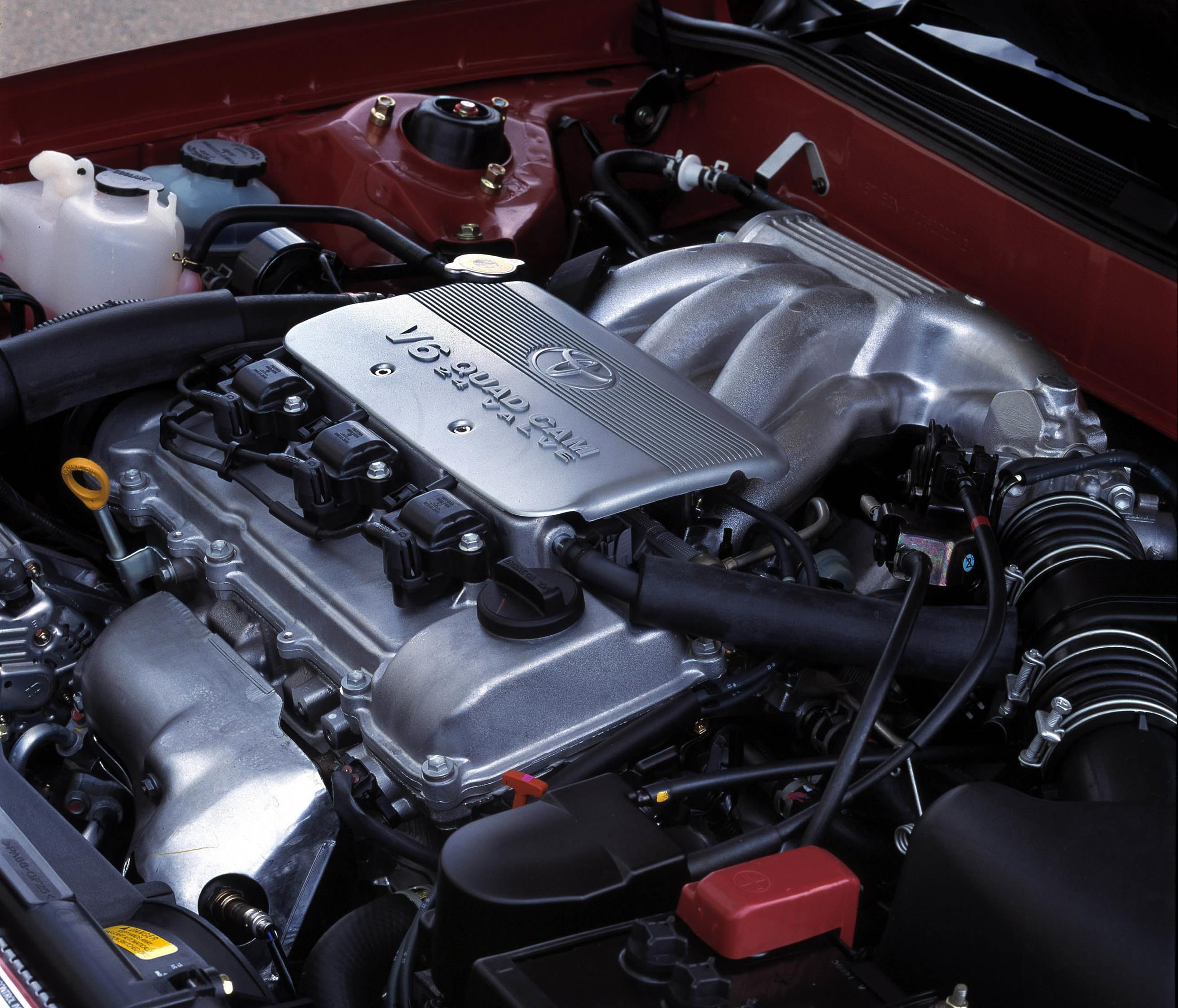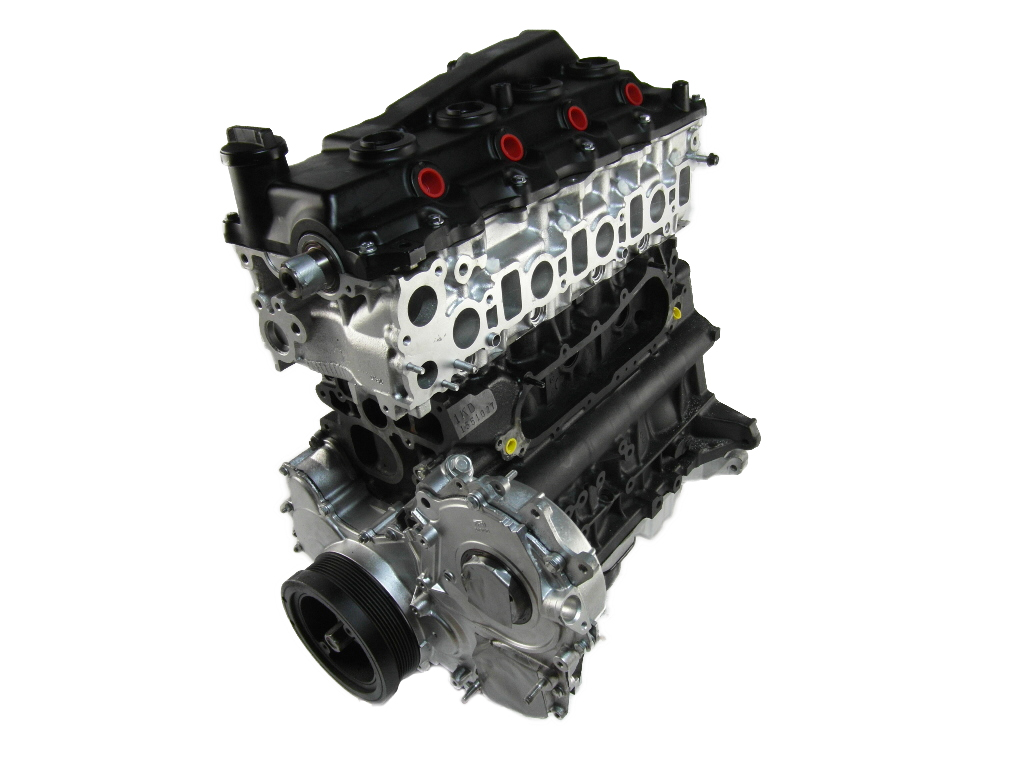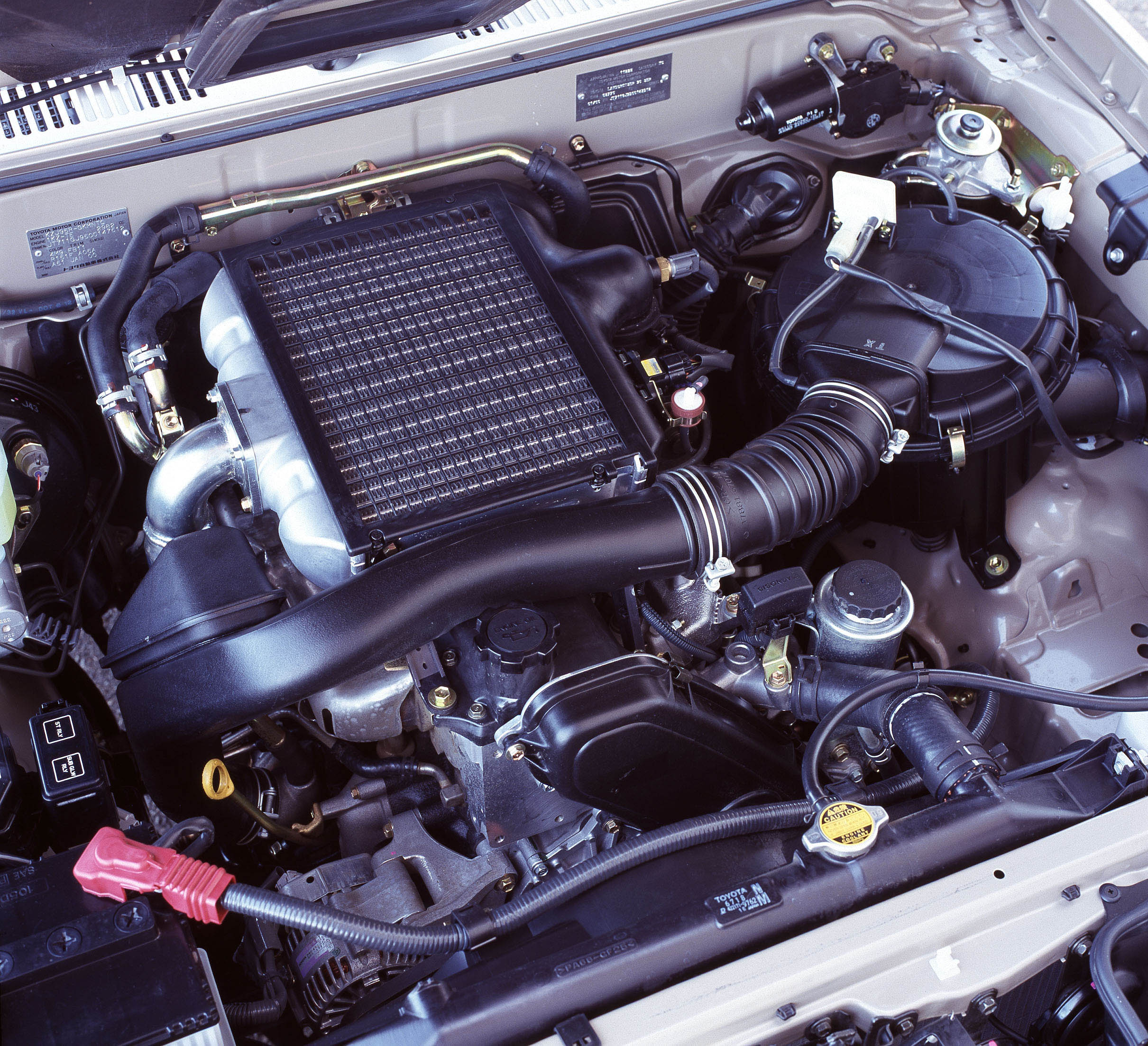Introduction
Chrysler’s EZD engine was a 6.1-litre V8 petrol engine that was produced from 2006 to 2011 and powered vehicles such as the Chrysler LX 300C SRT-8and Jeep WH Grand Cherokee SRT-8 (see table below). Made at Chrysler’s Saltillo Engine plant in Ramos Arizpe, Mexico, key features of the 6.1L HEMI V8 engine included its:
- Deep-skirt, grey cast-iron block with a 90-degree ‘V’ and open-deck design;
- Forged micro-alloy steel crankshaft;
- Flat-top cast aluminium alloy pistons;
- Cast aluminium alloy cylinder head;
- 2 valves per cylinder actuated by pushrods;
- Compression ratio of 10.3:1;
- Two spark plugs per cylinder; and,
- Maximum engine speed of 6400 rpm (electronically limited).
Compared to the 5.7L EZB HEMI V8 engine on which it was based, changes for the 6.1L HEMI V8 engine included:
- A reinforced block;
- Forged steel crankshaft (compared to nodular cast iron);
- Higher-strength powdered metal connecting rods;
- Piston-cooling oil jets;
- Improved intake and exhaust breathing;
- Performance-oriented camshaft profiles to allow more air in and out of the cylinders;
- Hollow intake and sodium-filled exhaust valve stems;
- A higher compression ratio (10.3:1 compared to 9.6:1); and,
- Modified oil pan to manage oil return to the sump at high engine speeds.
These changes are explained in greater detail below.
For simplicity, this engine will refer to the ESF engine as the 6.1L HEMI V8 engine.
| Model | Years | Engine | Trans. | Peak power | Peak torque |
|---|---|---|---|---|---|
| Chrysler LX 300C SRT-8 | 2006-11 | 6.1-litre ESF petrol V8 | 5sp auto | 317kW at 6000rpm | 569Nm at 4600rpm |
| Jeep WH Grand Cherokee SRT-8 | 2006-10 | 6.1-litre ESF petrol V8 | 5sp auto | 313kW at 6000rpm | 569Nm at 4600rpm |
Block
The 6.1L HEMI V8 engine had a deep-skirt, grey cast-iron block (5037388AB casting) with an open-deck design that required large deck surface openings for easy sand removal after casting since the block did not have core plugs (to prevent coolant leaks). The 6.1L HEMI V8 engine had 103.0 mm bores (3.5 mm larger than the 5.7L HEMI V8 engine) that were spaced at 113.3 mm intervals and a 90.9 mm stroke for a capacity of 6059 cc. The cylinder banks formed a 90 degree ‘V’ angle and had a 22.4 mm offset.
Relative to the 5.7L HEMI V8 engine, changes for the 6.1L HEMI V8 engine included:
- A different casting for the block;
- Reinforced bulkheads to handle higher loads;
- The cylinders were honed using torque plates to simulate stress for greater honing precision (thereby reducing internal friction);
- The coolant channels were revised; and,
- The holes in the valley of the engine block for Chrysler’s ‘Multi-Displacement System’ (i.e. cylinder deactivation under light loads) were filled with plastic plugs).
The front cover of the 6.1L HEMI V8 engine was made from die-cast A380 aluminium and sealed the front of the block and sump; the alternator, water pump, air-conditioning compressor, power steering pump and belt idler were all mounted on the cover. The HEMI V8 engine was 523 mm long and had a deck height of 235 mm.
Crankshaft
Unlike the 5.7L EZB HEMI V8 engine which had a cast nodular iron crankshaft, the crankshaft for the 6.1L HEMI V8 engine was forged from micro-alloy steel. The crankshaft was supported by five tri-metal main bearings, each of which had four bolts (two vertical and two horizontal). Furthermore, the main bearing caps were made from powder metal and used cross-bolting with a single M8 bolt each side. For the 6.1L HEMI V8 engine, the crankshaft damper was retuned for higher engine speeds.
For the 6.1L HEMI V8 engine, the crankshaft had four bolt holes in a circular pattern for the crank sensor that was located behind the last counterweight. However, Chrysler did not supply crank sensors separately because the crankshaft was balanced with the sensor on it and Chrysler claimed that balance would be adversely affected if the crank sensor was changed. Owners therefore had to purchase a new crankshaft (with sensor) if the original sensor failed.
The main crankshaft journals had a 65 mm diameter, while the small-end journals had a 54 mm diameter. Furthermore, a vibration damper was press-fitted on the nose of the crankshaft.
Connecting rods
Like the 5.7L HEMI V8 engine, the connecting rods were manufactured from powdered metal and had cracked big-ends; for the 6.1L HEMI V8 engine, however, the rods were made from a higher-strength metal, had thicker beams and more material on both ends. Each connecting rod was 158.5 mm long and had a mass of 653 grams +/- 5 grams (including the bolts).
The connecting rods for the 6.1L HEMI V8 engine were bushed, not press-fitted like the 5.7L HEMI V8 engine. Furthermore, the connecting rod was attached to the piston by fully floating piston pin.
Pistons
The 6.1L HEMI V8 engine had cast aluminium, flat-top pistons that were designed for the 10.3:1 compression ratio. To reduce friction, the piston skirts were coated with Grafal (a graphite-based coating).
Unlike the 5.7L HEMI V8 engine, the 6.1L HEMI V8 engine had oil squirters in the cylinder block that sprayed the underside of the pistons for cooling. To accommodate the oil squirters, the oil pump had a pressure relief valve.
The 6.1L HEMI V8 engine had narrow piston rings are narrow (1.5 mm/1.5 mm/3.0 mm) and the ring pack was located close to the top of the piston. The top land was positioned within 3.0 mm of the crown to reduce crevice volume and emissions; to withstand heat and pressure, the top ring groove was hard anodized. Beneath the top ring, there was a reservoir groove to reduce pressure between the top and second ring.
Cylinder head
The cylinder heads for the 6.1L HEMI V8 engine were cast from A319F aluminium alloy. The cylinder heads were mounted on a three-layer stainless steel gasket – which had a compressed thickness of 0.7 mm – and bolted to the block using M12 bolts around the bores and M8 bolts near the intake manifold. Relative to the 5.7L HEMI V8 engine, the cylinder head ports for the 6.1L HEMI V8 engine were re-designed with larger cross-sectional areas which enabled 11 per cent higher flow in the intake ports and 13 per cent higher flow in the D-shaped exhaust ports.
Chrysler used computer aided engineering (CAE) to optimise coolant flow within the heads. The coolant flow followed a ‘U’ path which began at the rear of each cylinder head and exited at the front into the cylinder block. As a result of computational fluid dynamics (CFD) analysis, fillets and ribs were added to the internal head coolant passages so that higher velocity flows occurred in critical cooling zones. Furthermore, the engine had a wide valve bridge to maintain adequate cooling flow – this was considered important for truck applications where high loads may be required over prolonged periods.
Camshaft, pushrods and valves
For the 6.1L HEMI V8 engine, the high-strength, billet steel camshaft was positioned high in the cylinder block to minimise the length of the pushrods, though shorter pushrods were used for the intake valves relative to the exhaust valves. Relative to the 5.7L HEMI V8 engine, the pushrods for the 6.1L HEMI V8 engine were around 4.0 mm shorter because of the increased lift at the lobe.
The 6.1L HEMI V8 engine had two valves per cylinder with eight deactivating and eight conventional hydraulic lifters, all with roller followers. Specifications for the valves were as follows –
- Intake valve diameter: 52.8 mm (50.8 mm for the 5.7L HEMI V8 engine);
- Exhaust valve diameter: 40.6 mm (39.4 mm for the 5.7L HEMI V8 engine);
- Intake valve lift: 13.3 mm (12.0 mm for the 5.7L HEMI V8 engine);
- Exhaust valve lift: 13.0 mm (11.7 mm for the 5.7L HEMI V8 engine); and,
- Included valve angle: 34.5 degrees.
For the 6.1L HEMI V8 engine, the intake valve stems were hollow and the exhaust valve stems were filled with sodium for better heat dissipation. Furthermore, the valve seats and valve guides were made from powdered metal.
The lifters were oiled via the pushrods whereby oil circulated:
- From the pump to the cam bearings; then,
- Up through the cylinder heads to the rocker shafts; and then,
- Through the rockers and down the pushrods to the lifters.
As a result, the oil passages in the valley of the engine block could be used to deactivate the MDS lifters. Furthermore, the pushrods provided a reservoir of oil to prevent lifter noise at start up.
For the 6.1L HEMI V8 engine, upgraded valve springs were used which had external dampers for the higher maximum engine speed (6400 rpm).
Compared to the 5.7L HEMI V8 engine, the camshaft provided more valve lift and overlap for greater performance. It is understood that the 6.1L HEMI V8 engine had 283 degrees of intake duration and 286 degrees of exhaust duration at 0.006” with 50 degrees of overlap.
Intake
The 6.1L HEMI V8 engine had a cast aluminium intake manifold which, relative to the 5.7L HEMI V8 engine, featured larger diameter and shorter runners that were tuned top-end power; to reduce intake resistance, the internal runners were also core-dipped. Furthermore, the 6.1L HEMI V8 engine had a high-flow air cleaner box that was fitted with a tuned resonator – according to Chrysler, this added 6 kW (8 hp).
For the electronic throttle control, a DC motor with reduction gears was used to actuate the throttle.
Injection and ignition
According the Chrysler, the 6.1L HEMI V8 engine had hemispherical combustion chambers for large valves, high air flow and so that the spark plugs could be positioned close to the centre of the combustion chamber. However, the chambers were not truly hemispherical since there were squish areas on both sides of the combustion chamber. Relative to the 5.7L HEMI V8 engine, the combustion chambers for the 6.1L HEMI V8 engine had wider quench areas.
The 6.1L HEMI V8 engine had electronically-controlled, sequential multi-port fuel injection and a compression ratio of 10.3:1; for the 6.1L HEMI V8 engine, fuel injector capacity was increased by 14 per cent. Furthermore, the 6.1L HEMI V8 engine was designed for premium unleaded petrol and the engine management system used dual knock sensors.
The HEMI V8 engine had distributorless, coil over plug ignition via two spark plugs per cylinder – according to Chrysler, the two spark plug design shortened flame travel for more consistent combustion and reduced emissions. To reduce the likelihood of leaks, the spark plugs were mounted in cast-in towers.
Lubrication
The 6.1L HEMI V8 engine had a gerotor oil pump that was driven from the timing chain crankshaft sprocket. The oil pump housing was made from die-cast aluminium, the gerotors from powdered metal and the cover plate from cast iron. Oil capacity was 6.6 litres (7 quarts) and Mobile 10W-40 synthetic oil was specified.
Exhaust
The 6.1L HEMI V8 engine had a specially designed exhaust manifold whereby the exhaust headers were individual tubes that were encased in stainless steel. According to Chrysler, the exhaust runners enabled increased gas flow while maintaining fast light-off for the catalytic converters and contributed to a 9 kW increase in power (12 hp). The exhaust gases were routed through 2.75-inch diameter exhaust pipes (compared to 2.5-inch for the 5.7L HEMI V8 engine) which had 3.5-inch chrome tips.
For emissions control, the 6.1L HEMI V8 engine had dual close-coupled three-way catalytic converters and four heated oxygen sensors. Upon its release, the 6.1L HEMI V8 engine complied with Euro IV emissions standards.










